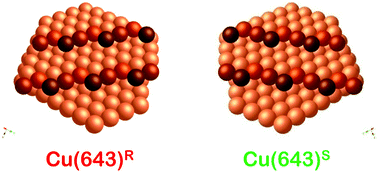Explosive enantiospecific decomposition of aspartic acid on Cu surfaces†
Abstract
Aspartic acid adsorbed on Cu surfaces is doubly deprotonated. On chiral Cu(643)R&S its enantiomers undergo enantiospecific decomposition via an autocatalytic explosion. Once initiated, the decomposition mechanism proceeds via sequential cleavage of the C3–C4 and C1–C2 bonds each yielding CO2, followed by conversion of the remaining species into N![[triple bond, length as m-dash]](https://www.rsc.org/images/entities/char_e002.gif) CCH3.
CCH3.

- This article is part of the themed collection: Chirality at the nanoscale


 Please wait while we load your content...
Please wait while we load your content...